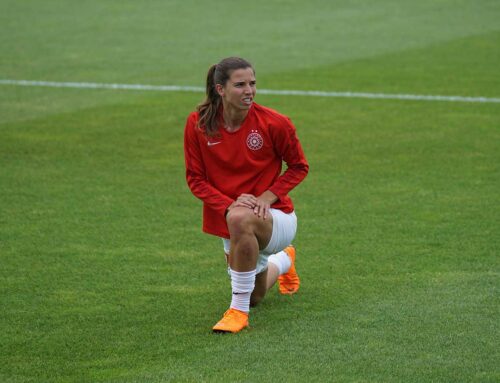Movement signature can predict when a player is at risk for injury.
In this article by BaseballAmerica.com, staff writer Ben Bradler explains how teams haven’t been successful in keeping pitchers safe from injuries, resulting in Tommy John surgeries. For a while efforts on keeping pitchers healthy centered around workload, as well as mechanical analysis of the pitcher’s arm action. More recently a data-driven model has become popular since data collection can predict whether a pitcher is at higher risk for pulling a hamstring, straining a groin or even an injury higher up like an oblique strain. Dr. Phil Wagner of California-based Sparta Science believes the data obtained from a vertical jump can detect when a pitcher is at higher risk for a UCL tear.
As Wagner noted, “People are looking up the chain, which is valuable, but it doesn’t start there,” Wagner said. “If (the lower body) is off, what you do up the chain doesn’t matter. You can do all the rotator cuff and UCL strengthening in the world, but if you’re not setting up right with your lower body, there’s not going to be a lot of longevity.”
Sparta gathers its data from an athlete jumping off a 40lb force plate. The vertical jump off the force plate spits out data into what Sparta calls a movement signature that spotlights three quantifiable variables: load, explode and drive.
By the time a pitching coach or a quantitative analyst notices that a pitcher’s lower release point might indicate an underlying health issue, it might be too late, with the damage already done to the elbow. But if a team sees that a pitcher’s load variable is too low, the club can prescribe workouts tailored to enhance that value and keep him off the mound until that risk factor is alleviated, especially with a prospect where the team doesn’t need to have them contributing immediately.
Knowing when a pitcher is at risk and being able to alleviate that risk could potentially keep him away from the disabled list and the surgeon’s table. Or maybe the pitcher will blow out his arm anyway. But if a preventative, data-driven model can help keep a pitcher healthy an extra few years, the value to the player and to the team is obvious.
—–
You can read the full article at:
Data From Legs Aims To Aid Pitchers’ Arms
April 27, 2016 By Ben Bradler with Baseball America





Leave A Comment